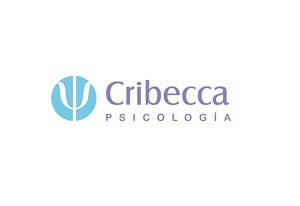Negative automatic thoughts: what are they and how do they appear
For better or for worse, most of what happens in our minds is beyond the control of our will, and even happens without our realizing it.
This implies advantages such as allowing us to direct our attention to really complex mental tasks and that require deliberate effort, such as making a decision about where to go or what product to buy. However, it also has some downsides. For example, that we cannot totally control what it is that will appear in our consciousness.
In this article we will talk about a very annoying phenomenon that is related to the latter. It's all about negative automatic thoughts.
- Related article: "Anguish crisis: symptoms, causes and treatment"
What are negative automatic thoughts?
As its name indicates, negative automatic thoughts are a set of mental contents (verbally articulated ideas, imagined images, etc.) that they emerge in consciousness in a disruptive way, regardless of what the person wants to think about, and that generate an emotional disturbance.
Thus, it is a psychological phenomenon that causes discomfort and that interrupts the dynamics of thought of the person, since in most cases Sometimes the emotional impact of these negative automatic thoughts is greater than what was being thought before they appeared in consciousness.
Although the feeling of experiencing one of these automatic thoughts is unpleasant, the degree to which they disturb us can vary greatly; in some cases, its emotional charge and its frequency are not so important as to suffer significantly, but in certain cases they can wear down the quality of life of people, and can even constitute one of the symptoms of a disorder psychological.
Causes
The causes of negative automatic thoughts are very varied, and present differences depending on the person and the context in which they live. However, there are a number of psychological factors that increase the chances of making these thoughts appear in our day-to-day lives, and they actually overlap each other relatively frequently. They are as follows.
1. Anxiety
It is not surprising that negative automatic thoughts appear in most people with anxiety problems. These produce a "vicious circle" type effect.: Since the person is already alert and sensitive to possible signs that something is going to go wrong, they are more likely to attract disturbing images, pessimistic ideas, etc. to their consciousness.
- You may be interested in: "Types of Anxiety Disorders and their characteristics"
2. Depressed mood
Depression and low mood in general introduce a pessimistic bias in people, and therefore, creates more "mental routes" to unpleasant ideas or memories.
3. Problems in social relationships
Phenomena such as social phobia or the propensity to argue with someone close to them can give way to negative automatic thoughts frequently, given that when thinking about those people with whom unpleasant experiences have occurred, those painful emotions become what the most focused on attention. What's more, each new encounter with these people can “reinforce” that association, by giving way to unpleasant interactions in which we feel uncomfortable.
4. Psychological grief
The loss of something to which we felt emotionally attached, as well as the loss of loved ones, is a common source of negative automatic thoughts. For example, while this process takes place, it is normal to suddenly remember the last moments of life of that person, and at the same time feel the sadness of that situation mixed with the longing for the lost. Fortunately, in most cases the psychological grief resolves itself in only a matter of a few months.
5. Personality prone to neuroticism
People who score high on the personality element “Neuroticism” are more exposed to experiencing painful or unpleasant emotional reactions to day-to-day events, and they are also more likely to maintain emotional sequelae after having gone through psychologically demanding experiences.
6. Guilty feeling
Having performed an action that we are not proud of is also one of the frequent causes of negative automatic thoughts. Is about a kind of memory that clashes with the concept of the "ideal self", what we would like to be, and therefore produces a discomfort that is expressed from time to time, drawing our focus of attention to that part of memory.
To do?
These are some tips to deal with these types of thoughts, although the most effective measure that can be taken in these cases is to go to psychotherapy.
1. Don't try to block those thoughts
Trying to totally shut out these negative automatic thoughts is counterproductive, because gives them more power, by predisposing us to pay attention to them.
2. Practice attentional focus management
- The key is to accept the existence of these thoughts, but learn not to give them all the prominence. The ideal is to learn to direct our attention to other types of stimuli, assuming that it is natural to feel a certain degree of discomfort. Mindfulness exercises often help.
3. Maintain healthy habits
When our bodies are weakened or in poor condition, we are much more likely to suffer from anxiety and anguish in all its forms. Get enough sleep, and eat a balanced diet.
4. Practice exercise
Get regular moderate exercise helps to "disconnect" from those experiences or ideas that worry us excessively, which allows us to face these problems in a constructive way.
Are you looking for psychological treatment?

Fortunately, with the help of psychology professionals, it is possible to learn to prevent and cushion the emotional impact of negative automatic thoughts.
If you are interested in having psychotherapeutic support from professionals with many years of experience, we invite you to get in touch with our team of psychologists. In Cribecca psychology we attend both in person in our center in Seville and through online therapy by video call, and we have professionals specialized in different areas of emotional well-being and trained to help people of all ages. You can see more information about our center, as well as our contact information, at this page.
Bibliographic references:
- Joormann, J.; Dkane, M.; Gotlib, I. H. (2006). Adaptive and maladaptive components of rumination? Diagnostic specificity and relation to depressive biases. Behavior Therapy. 37 (3): pp. 269 - 280.
- McLaughlin, K.; Behar, E.; Borkovec, T. (2005). Family history of psychological problems in generalized anxiety disorder. Journal of Clinical Psychology 64 (7): pp. 905 - 918.
- McLaughlin, Katie A.; Borkovec, Thomas D.; Sibrava, Nicholas J. (2007). The effects of worry and rumination on affect states and cognitive activity. Behavior Therapy. 38 (1): pp. 23 - 38.
- Nolen-Hoeksema, S (2000). "The role of rumination in depressive disorders and mixed anxiety / depressive symptoms". Journal of Abnormal Psychology. 109 (3): pp. 504 - 511.


